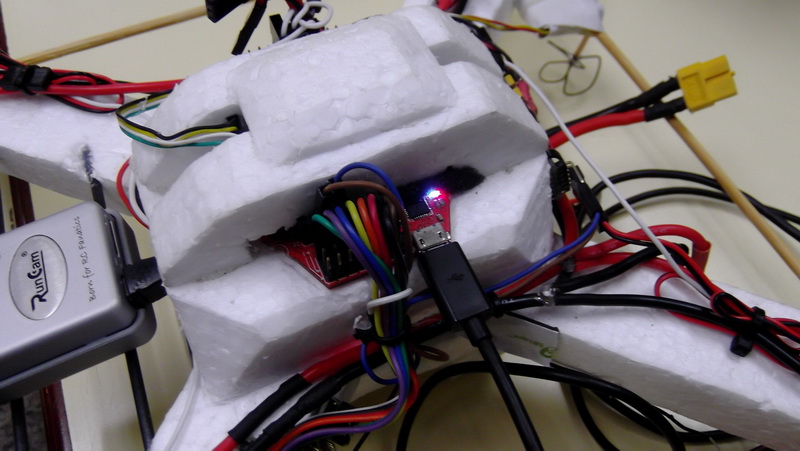
About
It all began when i was so bored with my DIATONE FPV 250 racer realizing racing wasn't my soup can of FPV flight but still wanted to squeeze more capability out of existing 250 hardware for future flight build. One day found a sheet of crafting foam sold USD$1 at stationary shop and had an idea what's to become of my boredom 250's. Bought the white planky foamy and fabricate it into 600mm x 600mm rotor to rotor size lightweight quadcopter frame hot glued together with embedded thin carbon spar rods into the rotor arm which i ripped out from made in china kite. The results 3x times lighter than empty stock nylon plastic 250 DIATONE racer frame and longer arm for super stability. The motor mounting for 1704 size 1900KV brushless was custom fabricated using 3D printer which enable full embed insertion into the foam without any chance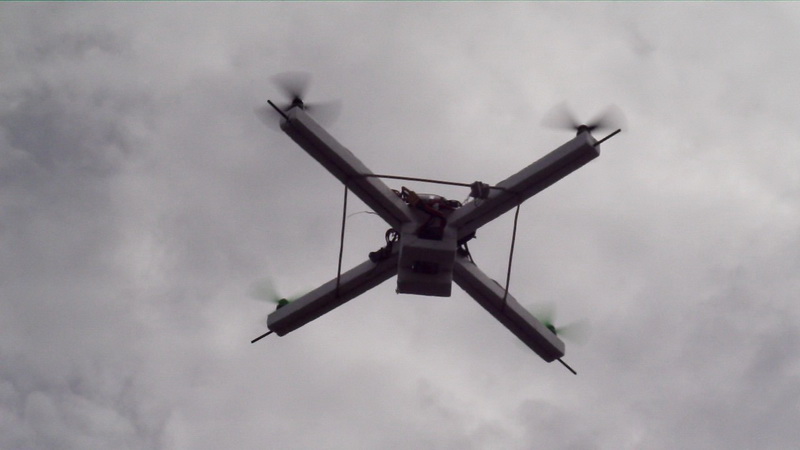 s being rip out during it flight lifespans. Then gut out all my DIATONE FPV 250 components and transfer it into a newly build foamy frame which i named it FPV-600. So the result mating 600 size quadcopter frame and a 250 parts i have myself a Hybrid FPV-600 multirotor specification. The only changes made was the original ESC have been upgraded to GARTT 20A ESC running on SIMONK firmware on early build but 2 week later final build was using EMAX 12A ESC also run on SIMONK firmware for fast rotor response from flight controller and further reduce overall flight weight. The FPV camera also upgraded from old 808 #16 HD V3 to latest release RUNCAM HD F2.8 lens FPV camera....a huge visual and aerial photography capable improvement.
s being rip out during it flight lifespans. Then gut out all my DIATONE FPV 250 components and transfer it into a newly build foamy frame which i named it FPV-600. So the result mating 600 size quadcopter frame and a 250 parts i have myself a Hybrid FPV-600 multirotor specification. The only changes made was the original ESC have been upgraded to GARTT 20A ESC running on SIMONK firmware on early build but 2 week later final build was using EMAX 12A ESC also run on SIMONK firmware for fast rotor response from flight controller and further reduce overall flight weight. The FPV camera also upgraded from old 808 #16 HD V3 to latest release RUNCAM HD F2.8 lens FPV camera....a huge visual and aerial photography capable improvement.
The first maiden flight was eye opening, never realized it flown excellent without need to tune PID extensively on the flight controller. The foamy frame rotor arm giveaway natural "dihedral" like arm bend similar to wing tip of a fixed wing glider to provide added plus stability on four corner of the rotor. By 22 May 2015 it has made 7 days of successful test flight without a glitch or error and it was ready to do several task required to satisfied our sponsor: to test and review RUNCAM HD F2.8 camera. The FPV-600 was the suitable mule to carry and test out aerial photography flight using latest RUNCAM HD F2.8 type camera due to the fact that the quad has naturally vibration free platform and could take sharpest video shots unlike any of my existing FPV quadcopter in my inventory..that include my old DJI PHANTOM.
Another week of aerial activity made by FPV-600 reveal more positive capability and feats. So here the factor that make my FPV-600 foamy quadcopter super cool:
-
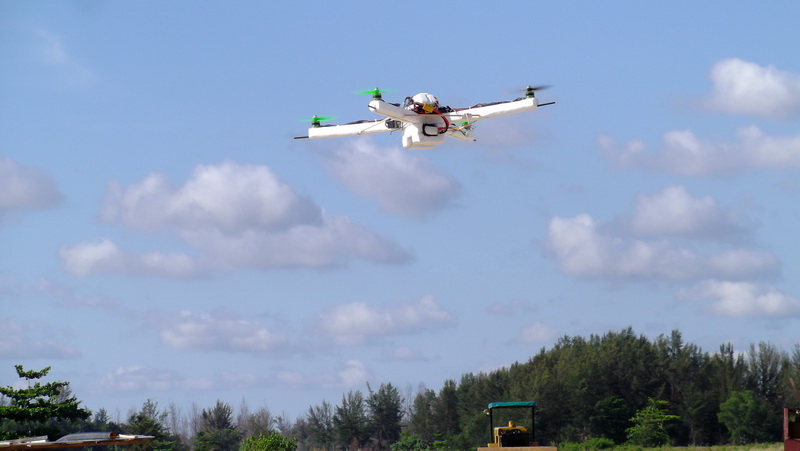 FLOATY/GLIDES
FLOATY/GLIDES
Yup, it floats and it glides with the wind, because its made from lightweight low density cheap crafty foam the wind can easily pick it up and stay afloat for a while. -
SUPER STABLE & NATURAL DIHEDRAL
Long rotor arms means better stability in all axis which makes it easier for the flight controller to calculate rotor thrust compensation if it tends to dunk down per-arm (increase angle sensing sensitivity). Another plus is because the arms made out of flexy foam upon take off into the air the all 4x arms lightly bend inwards towards the frame hub due to center gravity weight create almost dihedral like motor angle similar to a wing tip of a glider which help add plus benefit to its existing stabilization capability in its natural way. I just release my sticks even under heavy wind it still flew linearly stable without bad pitch or yaw. -
LOW CRASH CASUALTY
Obviously the whole frame build made out of foam, lightweight electronics and mini motors despite having frame spanned at 600mm rotor to rotor which consider big by FPV multirotor standard but it has the mass of a smaller 200-250mm multirotor with total flying weight of 480grams~ which is quadruple lighter that standard weight. Each arm have more beefy surface to slow down any fallout from the sky by underneath wind friction against microscopic air pocket between beads of foams. -
VIBRATION FREE
The frame is made out of foam, foam stuff dampen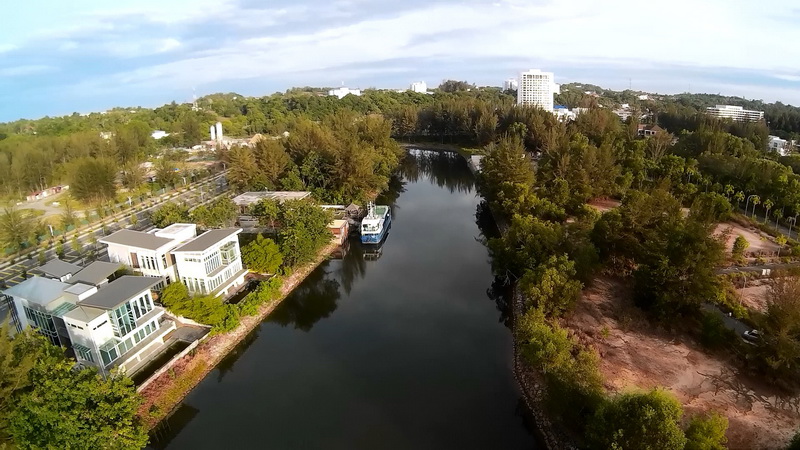 any vibration from the rotor. This allow non-jello video quality on-board HD camera and also nullifies any disturbance affecting the flight controller gyro/acellerometer/compass/nav sensor which then allow smooth autopilot control electronically.
any vibration from the rotor. This allow non-jello video quality on-board HD camera and also nullifies any disturbance affecting the flight controller gyro/acellerometer/compass/nav sensor which then allow smooth autopilot control electronically. -
EXCELLENT RADIO PENETRATION RANGE
Here another attributes of multirotor of foam build that hard to come by on normal standard quadcopter of today: it has better radio penetration range both control transmission and video/audio. Unlike commercial multirotor frame of today that are build using sturdy nylon plastic, fiber glassed, carbon fibers and rigid metal the home build low density foam frame is excellent material for long range flight because radio transmission between radio receiver/transmitter to ground are not obstructed by dense object such as rotor arm or main frame, instead it able to penetrate through soft foam allow straight solid line of sight video/audio communication and radio control between pilot on the ground and the model itself in the air. The foam material doesn't completely deteriorate or block the radio frequency which is a huge plus.
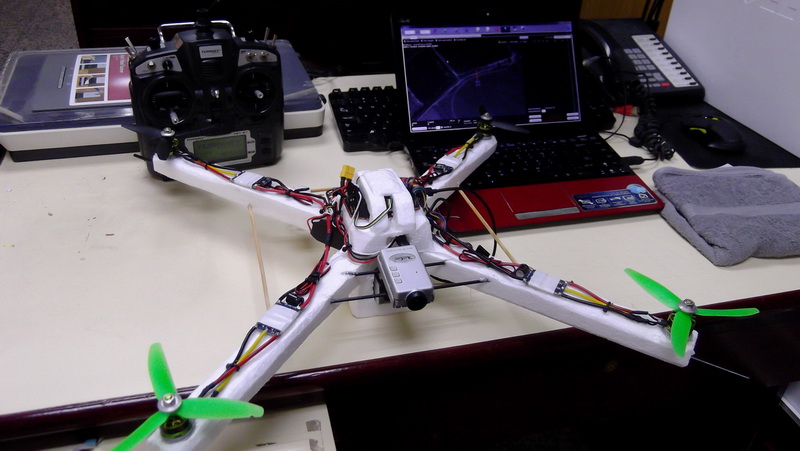
Model specification & setup
Airframe type: Quadcopter 600mm
Branding/Manufacturer: Home made..other times i did it in my office during lunch time.
Model name variant: FPV600
Material build: Low density lightweight foam
Rotor to rotor width: 600mm x 600mm
Flying weight: 480~gram
Flight control board: MultiWii Pro + GPS.
ESC: GARTT 20A with 5V/1A internal BEC (first build), EMAX 12A 5V/1A internal BEC (final build)
Motors: 1704 1900KV brushless
Proppellers: Gemfan/Turnigy 3 blade 5x3
Radio receiver: FrSky 2.4ghz telemetry type with diversified antenna.
Main battery: 2200~2700mah 3s 35c~45c
My DIY FPV specification.
Below are list of hardware needed for my FPV specification:
- Camera (First build): 808 #16 V3 720HD with video output. (This V3 camera uses MOBIUS camera tools)
Camera (Second build): RUNCAM HD F2.8 lens FPV camera. - OSD: MinimOSD flashed with KVOSD firmware to match MultiWii protocol.
- External BEC: HK mini 5A/5V UBEC to power flight controller board, camera and radio receiver.
- Video transmitter: 5.8ghz 200mw SKYZONE 32ch mini video transmitter 7~12v
- Video antenna: DIY tuned CL antenna
- Battery: Shared with main.

Building
So you know the frame i made to build the frame is made out of USD$1 foam which you can easily find at your local store, stationary shop, wallmart or probably in the trash bin behind the building from discarded big electronic foam packaging from either big LCD TV or fridge boxes. What kind of 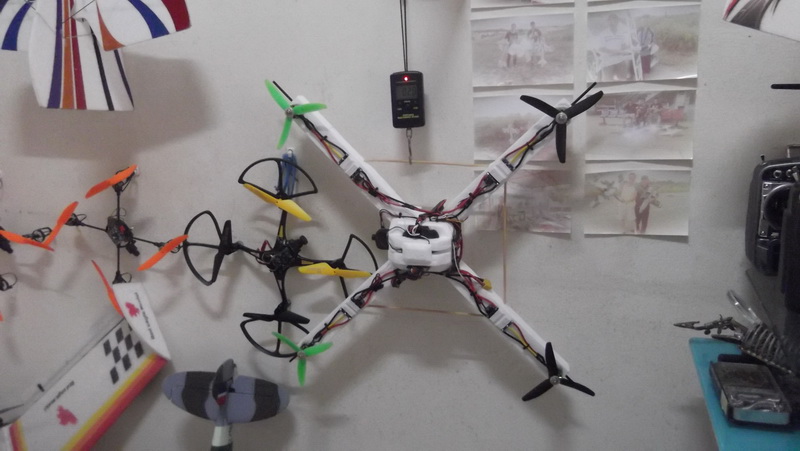 foam?....hmmm i don't know how to describe the foam i uses for my build. Certainly not as dense as EPO foam, not as spongy and flexible as EPP foam, neither as sturdy as Depron foam but certainly the foam i use is far lighter, very snowy, flaky, softer and more brittle than popular r/c model foam mention just now. The closest use for this foam i knew was more popular used for crafty art work in school for making statue models through pen knife crafting, soft foam board for use on your school bulletin board when you can pin up your posters and sometimes use as foamy cut out decoration at front store board shopping venue to display ads....things like that. But i hope you find that foam...wish you luck on that. But if you do found it then good on you, finally you can make world most superlight multirotor drone out of foam. So please do continue reading my article to startup your home made ambition. If you already made a quad frame out of it don't forget to chisel out those edgy surface around the rotor arm to make it aerodynamic so that the air and wind can flow around it rather than hitting the surface like a wall (air-brake). This allow the multirotor/quadcopter to weave around smoothly in the air. Too much surface to wind friction is bad so be smart about how you innovate the frame design surfaces into more aerodynamic and ergonomic.
foam?....hmmm i don't know how to describe the foam i uses for my build. Certainly not as dense as EPO foam, not as spongy and flexible as EPP foam, neither as sturdy as Depron foam but certainly the foam i use is far lighter, very snowy, flaky, softer and more brittle than popular r/c model foam mention just now. The closest use for this foam i knew was more popular used for crafty art work in school for making statue models through pen knife crafting, soft foam board for use on your school bulletin board when you can pin up your posters and sometimes use as foamy cut out decoration at front store board shopping venue to display ads....things like that. But i hope you find that foam...wish you luck on that. But if you do found it then good on you, finally you can make world most superlight multirotor drone out of foam. So please do continue reading my article to startup your home made ambition. If you already made a quad frame out of it don't forget to chisel out those edgy surface around the rotor arm to make it aerodynamic so that the air and wind can flow around it rather than hitting the surface like a wall (air-brake). This allow the multirotor/quadcopter to weave around smoothly in the air. Too much surface to wind friction is bad so be smart about how you innovate the frame design surfaces into more aerodynamic and ergonomic.
FPV building level difficulty/rating: Medium (6/10)
FPV equipment setup grade: Advance
Building hours required: 15 hours.
Skill required: Soldering and know hot to use hot glue for foam frame assembly
Critical issues during installation: Flight controller PID tuning...atleast less effort than tuning a 250.
Required additional mods/must do improvement: Wire and weight trimming
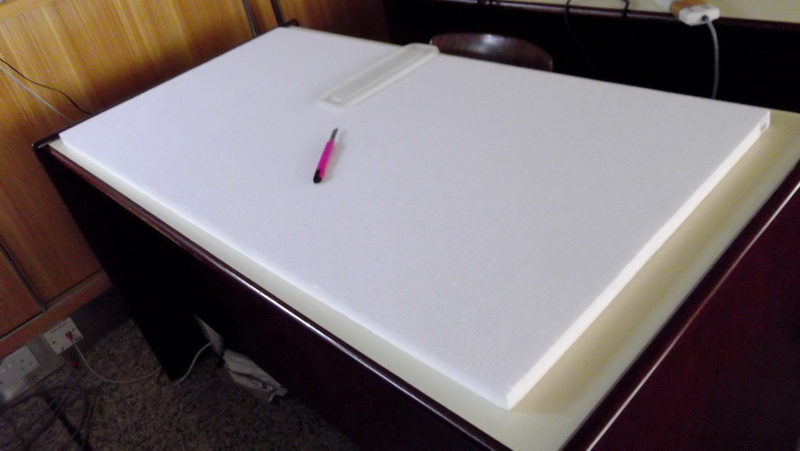 |
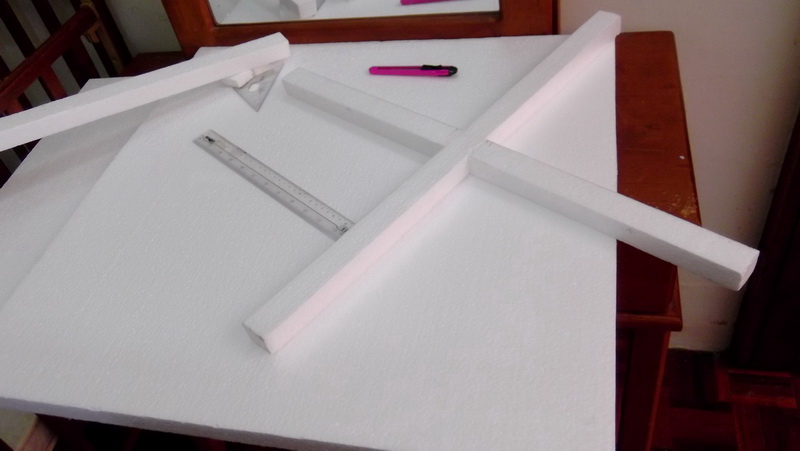 |
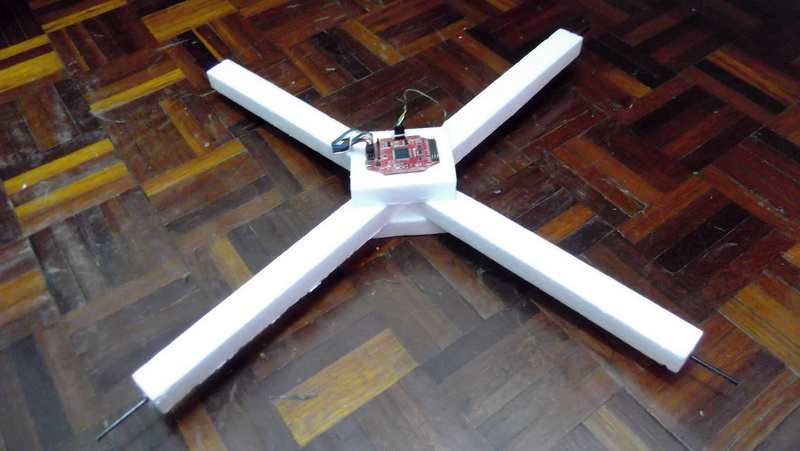 |
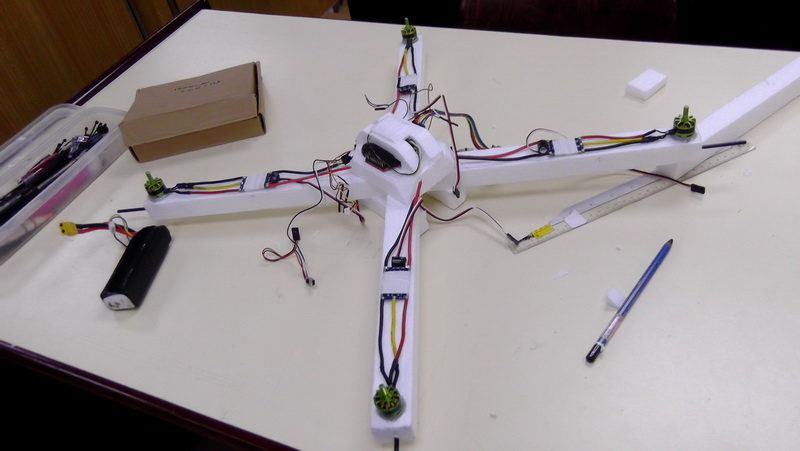 |


The rest of the build is pretty much no nonsense, straight to the point just install the electronics, motor , connecting wires and other stuff just like normal build on normal quadcopters. Just be smart enough how you attached those motor at the tip of the arm, be creative and find your way around it. I have 3d printer so i have my ways to fabricate those motor mountings. Don't forget hot glue it works instantly/magically like duct tape for your assembly. Another last advice is that just because its a 600 size quad doesn't mean you can deviate away from my build spec and grabs 600 size heavy multirotor parts the one build with total weight of 1~3kg. It doesn't work that way...here were talking about frame made out of brittle weak foam, it can only carry miniature parts such as 250 size quad's hardware just enough thrust and structural strength to carry its own weight. Oh don't forget to embedded those carbon fiber rods/spar within the foamy rotor arms to keep it structurally sane. Oh btw if your frame arm too stiff you won't get auto dihedral....but that's is very optional...up to your choices.
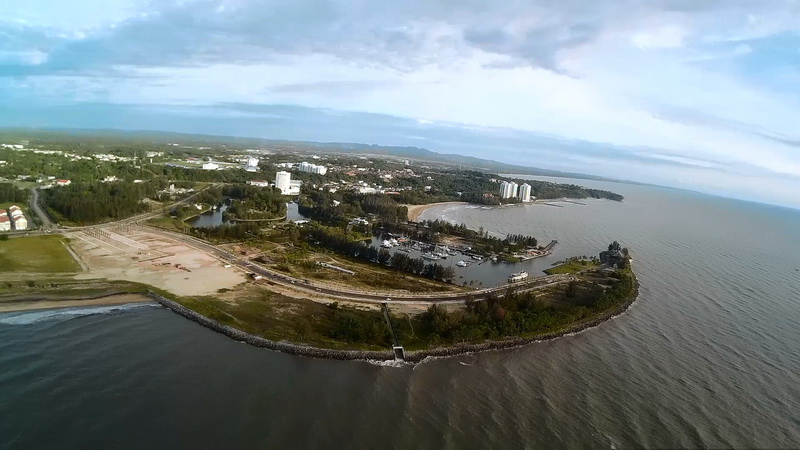
FPV flight characteristic and performance
Its hover super stable on stock PID thanks to its long rotor arm, lightweight foam further increase its flatness and definitely good for freestyle aerial 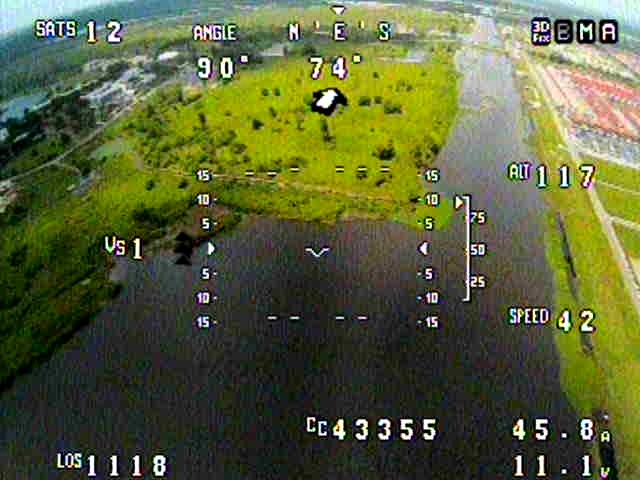 video shots since the foam zeroes down all the vibration. With all those great pros mentioned earlier above there nothing bad about having to build yourself out of cheap stack of recycled foams. Added more plus is the quad is running on open source flight controller: the MultiWii Pro capable of autonomous flight equivalent to UAV capability of unmanned flight. With longer rotor arm present whole new level of stability the MultiWii Pro able to utilized several flight feature that easy FPV flight a more enjoyable one such as auto landing, way point mission based flight, fail safe to return home flight (RTH), altitude/position hold, camera gimbal control, follow me feature and many more feature yet to tape in through codes and scripts...hey its an open source hardware....hooray!!
video shots since the foam zeroes down all the vibration. With all those great pros mentioned earlier above there nothing bad about having to build yourself out of cheap stack of recycled foams. Added more plus is the quad is running on open source flight controller: the MultiWii Pro capable of autonomous flight equivalent to UAV capability of unmanned flight. With longer rotor arm present whole new level of stability the MultiWii Pro able to utilized several flight feature that easy FPV flight a more enjoyable one such as auto landing, way point mission based flight, fail safe to return home flight (RTH), altitude/position hold, camera gimbal control, follow me feature and many more feature yet to tape in through codes and scripts...hey its an open source hardware....hooray!!
Minimum level of flight experience required/flight-hours: Beginner(5 hour)
Nature of platform handling experience/skill required: Beginners
Self leveling capability in thumbs-off stick situation: Yes
Take-off & landing difficulty: Easy
Take-off weight: <380g~400g
Hand launch: yup why not it works great...skills needed.
Max tilt angle: 43 degree.
Bail-out/fail safe recovery altitude limit: -
FPV flight/radius: 1500m ~ 2800m max (given above FPV spec/setup)
FPV safe distance range for testing: 500~1500m (Open field)
Flight time: 11~12 min
Ground spotter visibility (LOS): 200~350m
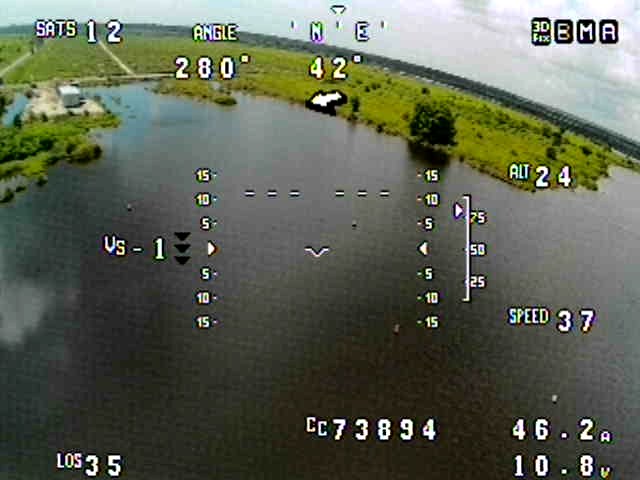 |
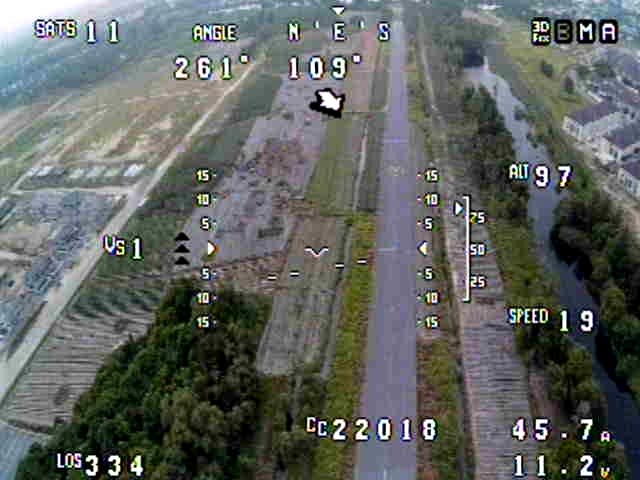 |
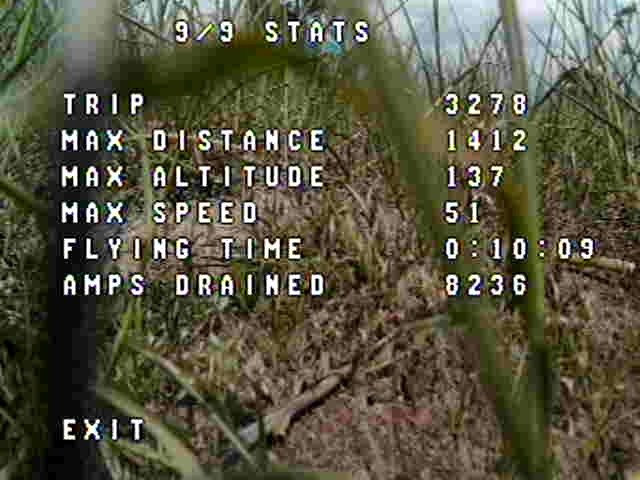 |
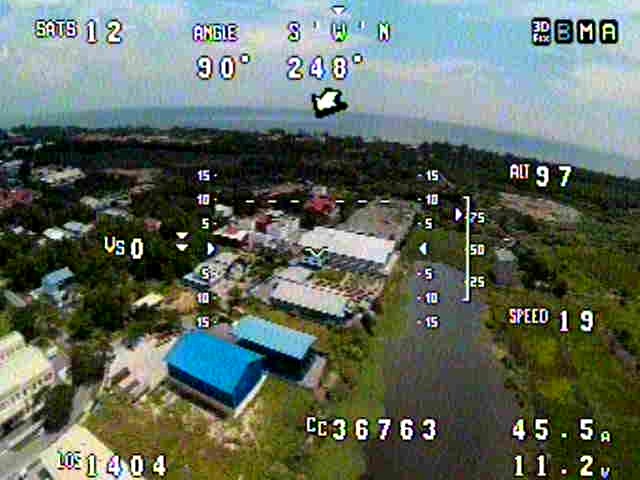 |
Safety issue
Well don't see any safety problem yet on this type of quad, for something that made out of lightweight soft brittle foam i don't see much harm done to the public nor crash hazard since most crash inertia force absorb nicely by the foam itself. Plus any unexpected drop from the sky are well air cushioned by surface wind friction which slow down the drop momentum aka air braking. The overall full flying quad weight masses tends to sway down like falling leafs than a falling tonnes of brick at high speed. Compare to the awkward size of 250's small 5030 (5x3) propellers against giant 600mm x 600mm size arm seems to be out of place in multirotor world yet looks physical harmless when versus to actual real life 600 size professional multirotor that weighted around 3kg. I must say when i fly this FPV-600 foamy it feels more pleasant and boost safety confidence. Where in the world can you find a 600mm size quadcopter weighted at superlight 480gram that made out of soft lightweight foam that glides? 10/10 Thumbs up to safety baby!
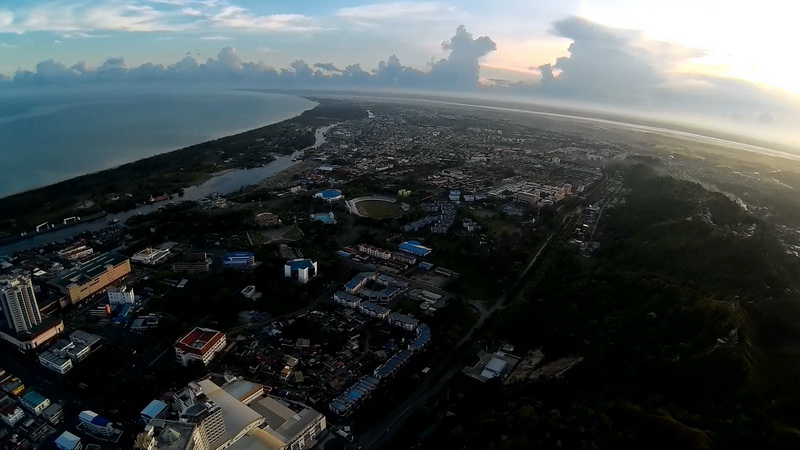
Pros and Cons
Here are list of pros and cons about this platform. Honestly speaking on my own terms i see more Pros rather than Cons....this Cons thing doesn't bother me much. Cons only applies if you don't have the experience or confidences to face it...hey its just a piece of cheap foam and cheap parts.
Pros:
Do i have to repeat all those good news again??...ok ok...just to sum up:
- Small and portable.
- Excellent radio penetration.
- Cheaper to build.
- Low risk of crash hazard to property and injury to living things.
- Natural vibration damping property. Foam provide best material to damped overall vibration emitted by the rotors and ensure the flight controller board and the camera itself place in a vibration free place holder.
Cons: 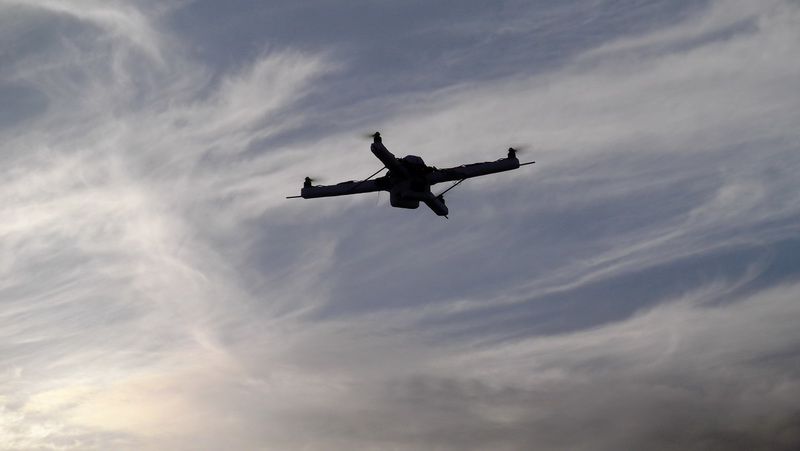 Oh.. ok nothing in life is perfect.....but you got more pros than cons which is good..ya? All i see down there is just a minor problem :
Oh.. ok nothing in life is perfect.....but you got more pros than cons which is good..ya? All i see down there is just a minor problem :
- Easily drifted away by heavy winds, nano pocket of air within the foam trap bunch of airflow causes excessive friction and slowing the quad movement to moderate travelling speed. It'll take twice amount of time to decent to lower altitude compare to normal quad due to its free floating attributes/air drag beneath overall frame surfaces. So reserve some li-po battery juice for returning home and landings.
- Very fragile. As usual the foam i use can be easily cracked and crumbs of foam easily sheds by just rubbing along the foam surface. A perfect mild landing needed to minimized structural damages.
- Noisy multirotor. Pretty much inherit traits from its typical 250 size hardware specification. Even distance between 300m~400m i can hear it coming.
- Increase PID setup for YAW. Due to its large extended arm, the small size rotor needed to work hard to maintain correct orientation and keep the YAW functional by increasing YAW power output to the motor to make the frame turning possible and also fight back any external force such as wind that off-set its frame orientation. In the videos provided below you will notice throughout the flight into the heavy wind YAW fight back by FC board is noticable.

Current status & flight history
Consider my best everyday 'go to' quad for fun aerial photography and adventures, multirotor that can go many places at low risk. May not be as stable as my DJI Phantom but its cheap enough to get the some fun up in the air. Plus it has excellent radio range, good altitude, slow and steady flight, good low altitude flight, no vibration and safe enough to fly anywhere without worry having a bad crash....hey its a foam! Till today had many great videos and sharp beautiful aerial video/photography taken on this platform. Also really impress the public and caught other FPV drone enthusiast by surprise how amazing this foamy object flies. Do visit my FPV-600 gallery to witness some awesomeness adventure we had together. Love is in the air!
Lifespan operation: 82 days (updated: 28 August 2015)
Maintenance priority check: Constant check for cracks at rotor arm....so far none.
Constant critical issue: None
Maintenance cost per-lifespan: None
Flight hours accumulated per-lifespan: 96 hours
Best L.O.S distance record: 2800m~
Est. distance covered per-lifespan: 870km (Odo) (Updated: 28 August 2015)
Best height record: -
Best flight time record per-session: 11~12min (2200mah 3s 40c)
Activity status: Active (Dominant multirotor)
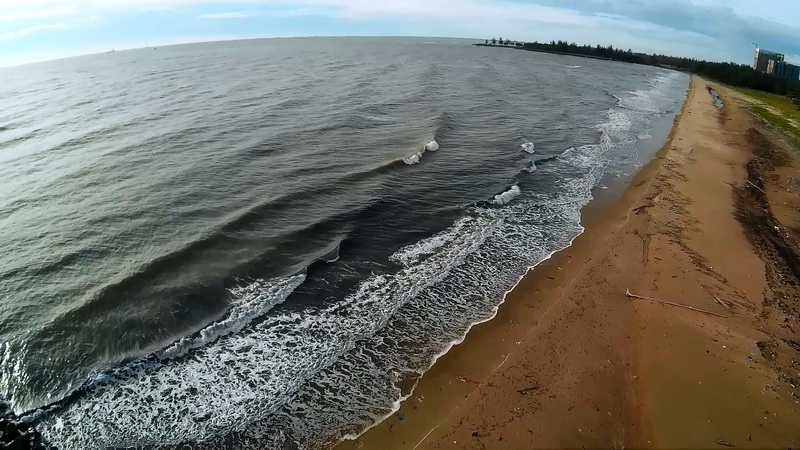 |
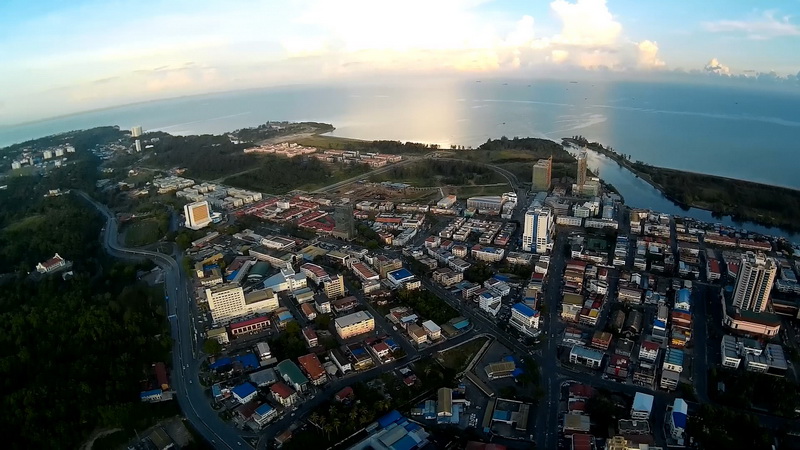 |
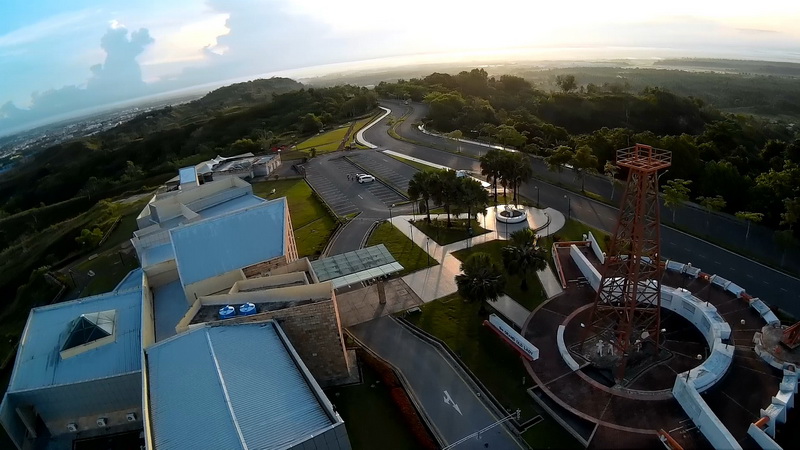 |
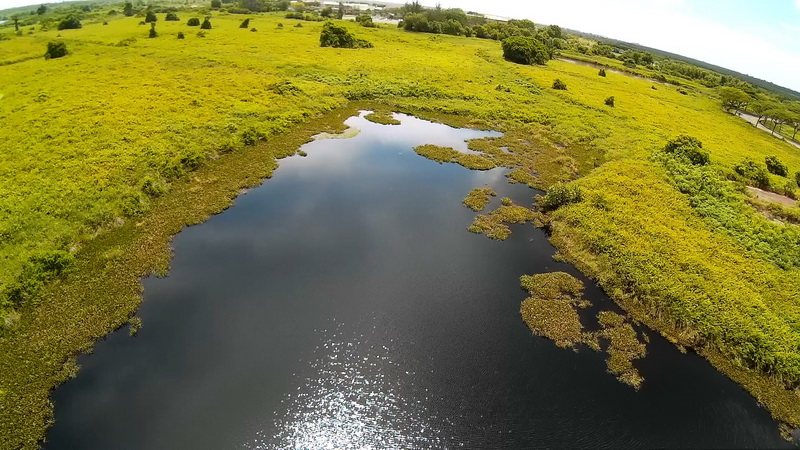 |
Summary
The foamy build FPV-600 is the flying magic carpet of multirotor world due to its natural way of stabilizing itself thanks to its foam attributes. Rotor arm 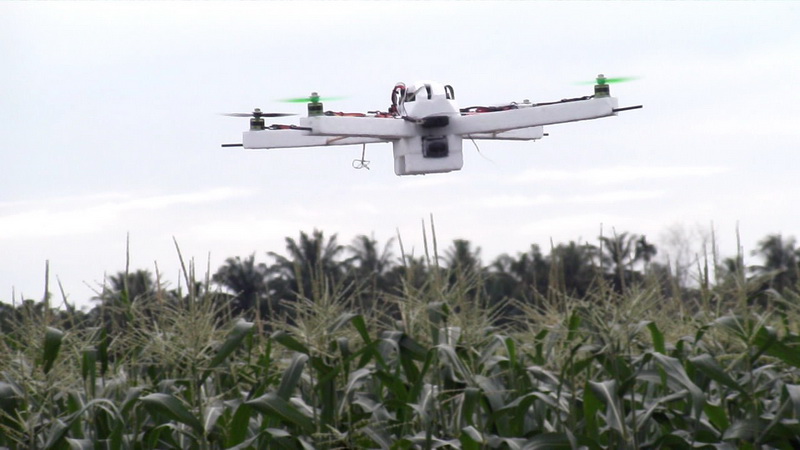 that can dihedral naturally...how cool is that? This is the only FPV multirotor that fit the words "Fly Safe". Ever since i had this thing flying i don't have to worry so much about getting much trouble if it happen to crash toward the ground because i know it would float and dampen the impact reduce risk of injury and minimized damages to living and non-living things on the ground. Its is consider most lightest multirotor known by current date based on frame size and most docile model to fly. Build out of USD$1 of foam from stationary shop it has to be the most cheapest DIY build ever known to mankind with hot glue as best companion....don't forget the carbon fiber spar/rod of course for structural suport. All the electronic stuff that snuck into the frame are cheap too made out of superlight FPV 250 parts...who need to buy an expensive quad anyways if you can build this without burning pockets plus offer better flying range, performance and neat feature like auto piloting, return home and autonomous etc thanks to open source MultiWii Pro flight controller.
that can dihedral naturally...how cool is that? This is the only FPV multirotor that fit the words "Fly Safe". Ever since i had this thing flying i don't have to worry so much about getting much trouble if it happen to crash toward the ground because i know it would float and dampen the impact reduce risk of injury and minimized damages to living and non-living things on the ground. Its is consider most lightest multirotor known by current date based on frame size and most docile model to fly. Build out of USD$1 of foam from stationary shop it has to be the most cheapest DIY build ever known to mankind with hot glue as best companion....don't forget the carbon fiber spar/rod of course for structural suport. All the electronic stuff that snuck into the frame are cheap too made out of superlight FPV 250 parts...who need to buy an expensive quad anyways if you can build this without burning pockets plus offer better flying range, performance and neat feature like auto piloting, return home and autonomous etc thanks to open source MultiWii Pro flight controller.
At time of writing the FPV-600 still heavily active flying around the skies, forest, urban outskirts and perform weekend demos to the public. The build itself was a stepping stone for my upcoming second foam quadcopter project. FYI this is not my first foamy quad i build...tracing back years ago though my old gallery collection i did built a 250 size foamy but didn't live long enough to tell its story. However FPV-600 foamy was a great flying success and will continue to do lots of FPV flight until till reach it paramount usage. DIY build rocks!

Videos/Medias![]() Here are some of my video and gallery related to the above topics:
Here are some of my video and gallery related to the above topics:
- Photo gallery: DIY Hybird foamy FPV 600mm - MultiWii Pro
- My Youtube channel: 3DXL
- My videos:
- Flight video: Foamy FPV-600 multirotor - backyard fun
- Flight video: RUNCAM HD F2.8 lens - Sunny lake FPV-600 foamy quadcopter
- Flight video: RUNCAM HD F2.8 lens - Morning flight on FPV-600 foamy quadcopter
- Flight video: DIY foamy FPV-600 size multirotor (Maiden flight)
- Flight video: RUNCAM HD F2.8 lens - Flight on FPV600 DIY foamy multirotor

Shopping list
The shopping list of part i've listed below are actually the same as listed on my FPV250 build minus the quadcopter frame which you have to DIY build on your own. You just need to find out the best foam material from your own local shop, choice of foam build is on your own terms. Below are list what i found great choices of parts to start your home made FPV-600 "foamy" size project on your lightweight foam build.
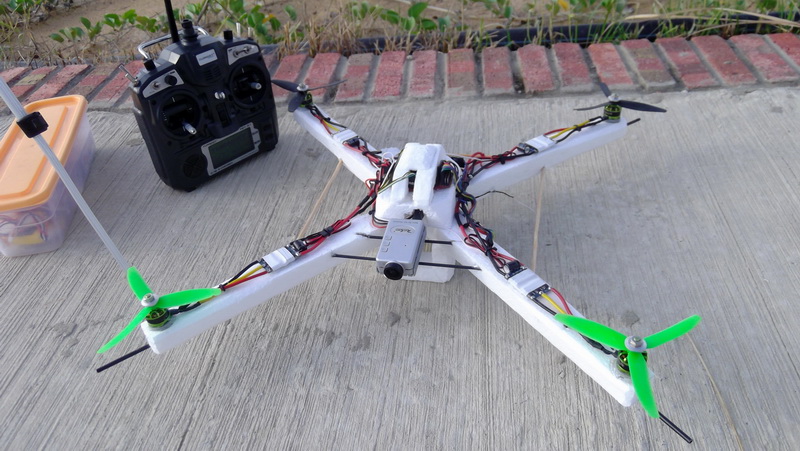 Radio set/combo (If you wanted to upgrade radio range/distance):
Radio set/combo (If you wanted to upgrade radio range/distance):
- Brushless motor:
- ESC (Electronic Speed Controller):
- Propellers:
- Main FPV piloting camera:
- 960H CCD Effio 700TVL Camera Mini Video Camera
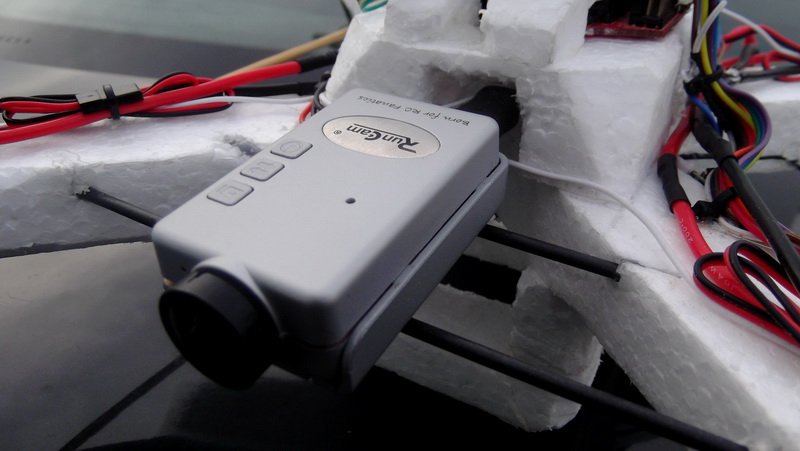
- Arkbird 1/3 Sony 960H CCD 700TVL FPV Camera For Aerial Photography
- DC12V 1/3 960H CCD 700TVL 2.8mm Lens Wide Angle Camera for FPV QAV250
- FPV 1/4 CMOS HD Color Camera Module 600TVL 120 Degree Wide Angle
- Aomway HD Mini 1/3'' CMOS 600TVL 2.8mm FPV Camera MOL5P *2.54 Port
- DAL 700TVL FPV HD 1/4'' CMOS Camera Module Wide Angle
- Eachine 700TVL 1/3 Cmos FPV 110 Degree Camera w/32CH Transmission
- Eachine 700TVL 1/3 Cmos FPV 148 Degree Camera w/32CH Transmission
- 960H CCD Effio 700TVL Camera Mini Video Camera
- Main FPV piloting camera with integrated HD recording (video output capable):
- Basic flight controller:
- KK2.15 Mini Version Flight Controller Atmega644 PA For RC Multirotors
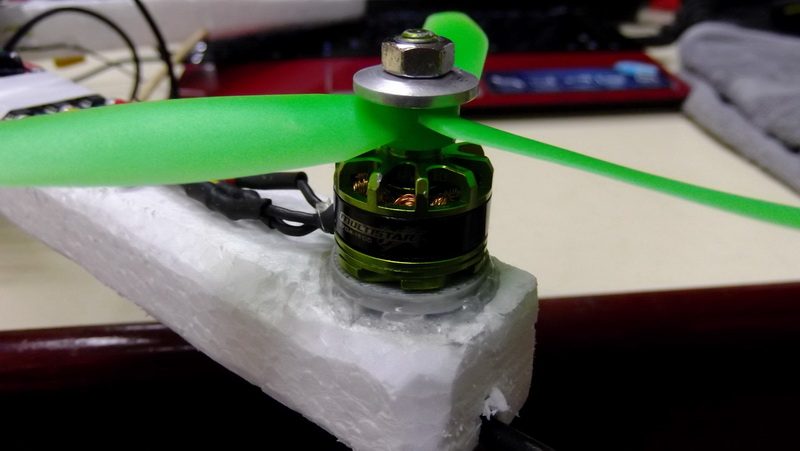
- KK2.1 Multirotor LCD Flight Controller With Atmega324 PA
- KK2.1.5 KK21EVO Flight Controller With Large LCD Second MPU
- OpenPilot CC3D Flight Controller Staight Pin STM32 32-bit Flexiport
- OpenPilot CC3D Flight Controller Bent Pin STM32 32-bit Flexiport
- KK2.15 Mini Version Flight Controller Atmega644 PA For RC Multirotors
- Advance Flight controller/AP System (for advance and autopilot build)
- MWC MultiWii SE V3.0 Flight Controller Board Standard Edition
- Crius MWC MultiWii SE V2.5 Standard Multi-Copter Flight Control Board
- CRIUS MWC MultiWii SE V2.5 Control Board W/GPS NAV Module Combo
- MultiWii PRO Flight Controller w/MTK GPS Module
- Eachine Mini APM V3.1 Flight Controller With NEO-6M GPS Module
- Mini APM V3.1 Flight Controller With Neo-6M GPS For Multicopters
- Mini APM2.72 Flight Controller with 6M GPS Telemetry OSD Power Board
- OSD module (On Screen Display):
- RCD 3060 OS Mini OSD FPV Module
- Skylark Tiny OSD III With 10Hz GPS And 60A Current Sensor
- Tarot TL300L OSD Module Image Overlay GPS System
- MinimOSD MAVLink OSD APM 2.6 APM 2.52 Flight Control Board
- Minim OSD On-Screen Display OSD Board APM Telemetry to APM 1 and APM 2
- CRIUS MAVLink-OSD Compatible With MinimOSD DC-DC Flight Control Board
- BEC:
- Video transmitter/combo:
- Skyzone TS5823 5.8G 200mW 32CH AV Transmitter Module
- Boscam TS586 FPV 5.8G 600mW 32CH AV Wireless Transmission Transmitter
- Boscam FT953 5.8G 400mw 32CH Mini FPV AV Transmitter
- Boscam FPV 32CH 5.8G 350mW Wireless Transmitter AV Transmission Black
- Boscam FPV 32CH 5.8G 600mW Wireless Transmitter And RC905 RX Receiver
- Boscam FPV 32CH 5.8G 350mW Wireless Transmitter And RC905 RX Receiver
- Video receiver/video goggle/LCD combo:
- Boscam FPV 5.8G 32CH Wireless AV Receiver RC832
- FPV 7inch TFT-LCD Monitor HD 800x480 Screen for RC Model
- Boscam Galaxy D4 FPV 5.8G 32CH LCD 8 Inch Monitor With DVR Receiver
- Boscam Galaxy D2 FPV 5.8G 32CH LCD 7 Inch Monitor For DJI WLtoys
- Skyzone SKY-700D FPV 5.8G 32CH Diversity 7 Inch TFT Monitor DVR
- SkyZone SKY-01 V2 FPV AIO Goggles 5.8G 32CH Head Tracing Glasses
- Boscam GS923 FPV 5.8G 32CH Div AIO Wireless Video Glasses Without DVR
- Boscam GS923 FPV 5.8G 32CH Div AIO Wireless Video Glasses with DVR
- Main battery:
Building threads/Referral/Support forum
If you don't know where to begin with i recommend you to start reading some 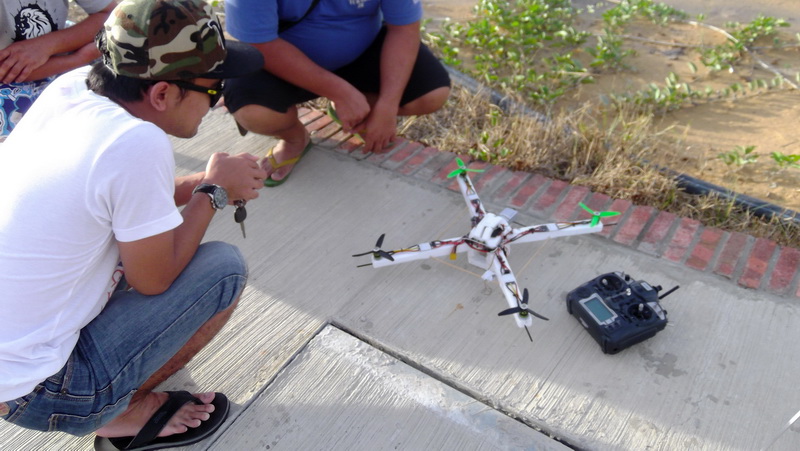 guides, wikis and building tips from popular on-line resources as listed below. You might find me hanging around some popular R/C and FPV forum below.
guides, wikis and building tips from popular on-line resources as listed below. You might find me hanging around some popular R/C and FPV forum below.
- Rcgroups.com - General multirotor forum
- KK2 flight controller board forum and faq
- KK2 at Openpilot.org
- Flitetest.com KK2 build
- MultiWii flight controller wiki
- MultiWii website
- Rush-OSD/KVOSD development
- KVOSD firmware, setup and wiring
- Fpvlab.com - MWOSD - for MultiWii


